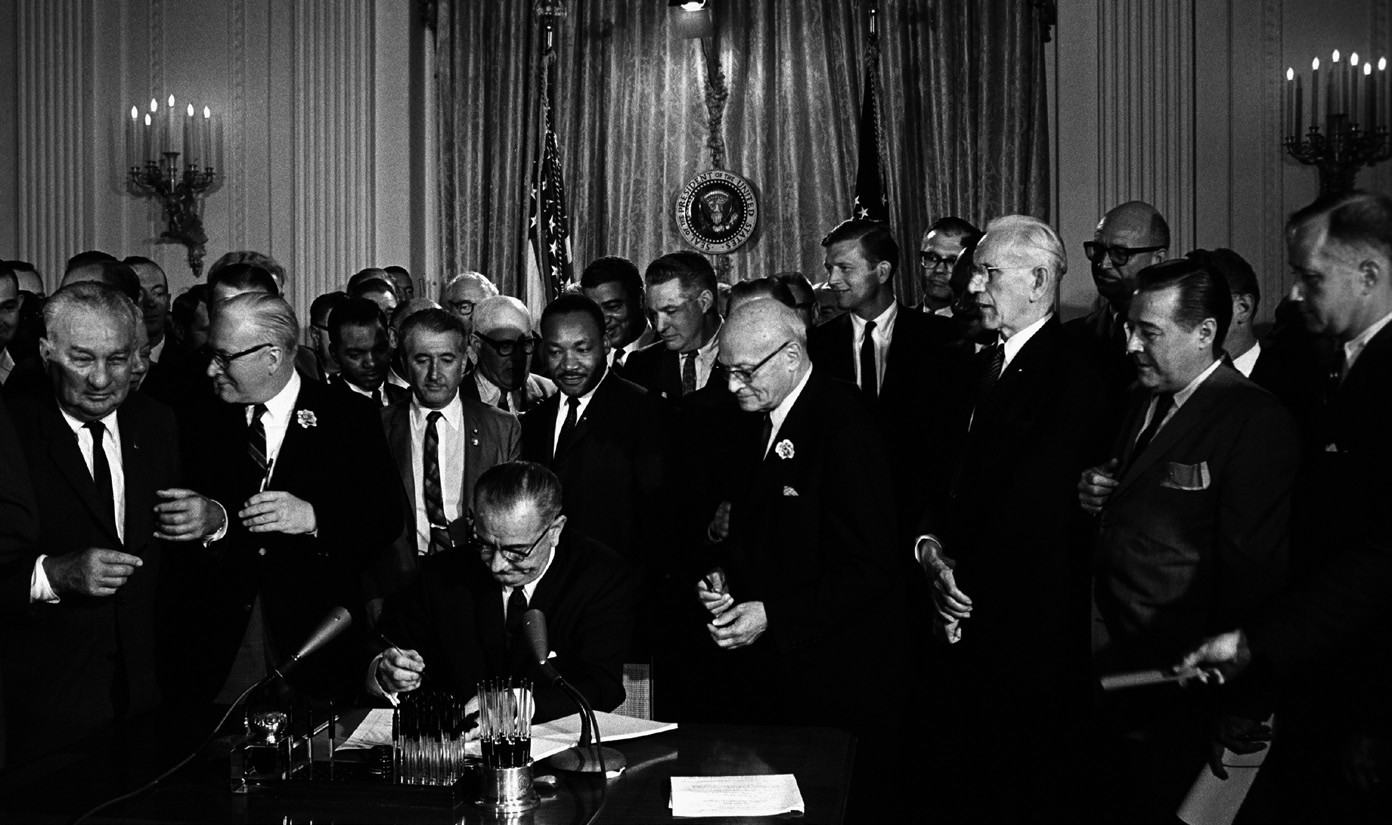
Affirmative action refers to programmes and processes that actively seek to improve employment and educational opportunities for previously disadvantaged groups. In the USA, policies of affirmative action were first initiated under the presidency of Lyndon B. Johnson (1963–69). They were designed to counter longstanding discrimination by using preferential selection and recruitment policies, as well as in the awarding of contracts and the provision of other social benefits according to criteria based around race, disability, gender, ethnic origin and age.
Following the landmark Civil Rights Act of 1964 (Box 1), further civil rights legislation and executive orders broadened and confirmed the requirements for federal agencies, businesses receiving federal funds, colleges and universities to reinforce policies of affirmative action by focusing on equality of outcomes. By doing this, the use of quotas to allocate specific percentages of jobs, places or contracts to people from disadvantaged minority groups became widespread.
Your organisation does not have access to this article.
Sign up today to give your students the edge they need to achieve their best grades with subject expertise
Subscribe




